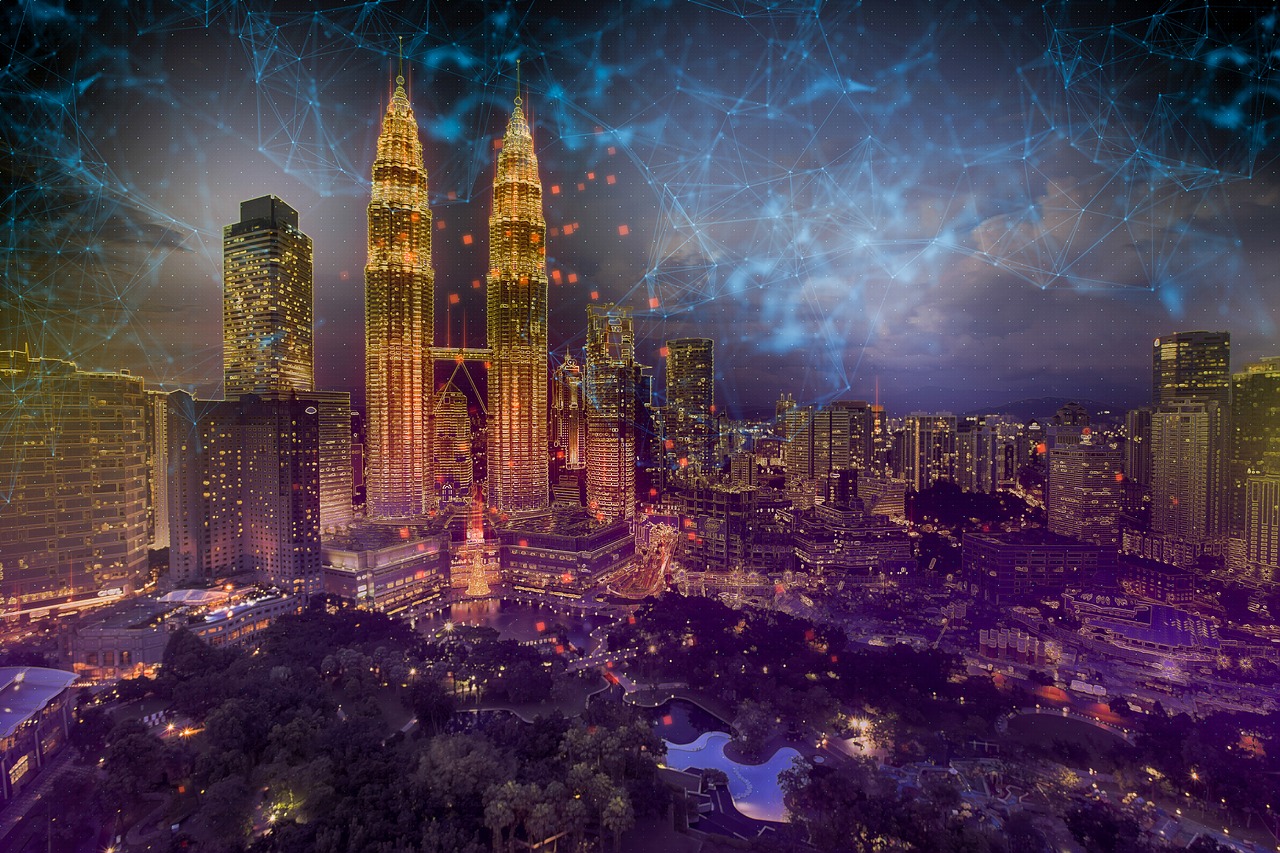Imagine a world where every physical object around you has a digital counterpart, seamlessly interconnected and allowing for unprecedented levels of collaboration and problem-solving. These virtual replicas, known as digital twins, have the power to revolutionize industries and transform the way we interact with the world. In this article, we will explore the concept of digital twins and delve into their potential applications across various sectors, from manufacturing to healthcare. Join us on this exciting journey as we uncover the fascinating world of digital twins and the endless possibilities they bring.
What are Digital Twins?
Digital Twins refers to the creation of virtual replicas of physical objects or systems using advanced technologies such as the Internet of Things (IoT), artificial intelligence (AI), and machine learning (ML). These virtual replicas are connected to their real-world counterparts through sensors and data collection, allowing for real-time monitoring and analysis. Digital Twins have gained significant attention in recent years due to their potential to revolutionize a wide range of industries and applications.
Definition
A Digital Twin can be defined as a virtual representation of a physical object, process, or system that mirrors its real-world counterpart in terms of its attributes, behaviors, and relationships. It serves as a bridge between the physical and digital realms, enabling real-time monitoring, analysis, and control of the physical entity. The concept of Digital Twins originated from the field of product lifecycle management and has since expanded to encompass various domains, including manufacturing, healthcare, and smart cities.
Function
The primary function of a Digital Twin is to provide a holistic view and understanding of a physical object or system. By capturing and analyzing real-time data from sensors and other sources, the Digital Twin can simulate the behavior, performance, and condition of its real-world counterpart. This enables the monitoring of key metrics, prediction of future states, and optimization of operations. Digital Twins can also support decision-making processes, facilitate remote diagnostics and maintenance, and improve overall efficiency and productivity.
Components
A Digital Twin typically consists of several components, each playing a crucial role in the creation and operation of the virtual replica. These components include:
-
Sensors: These devices are responsible for capturing real-time data from the physical entity. Sensors can measure various parameters such as temperature, pressure, vibration, and location, providing valuable insights into the behavior and condition of the object or system.
-
Data Collection and Integration: The data collected by sensors is processed and integrated to form a comprehensive view of the physical entity. This involves various data management techniques, including data cleansing, normalization, and aggregation. The integrated data forms the foundation for creating an accurate and up-to-date Digital Twin.
-
Digital Twin Platform: This is the software infrastructure that hosts the Digital Twin and enables its visualization, analysis, and control. The platform provides tools for data storage, analytics, and modeling, allowing users to interact with the Digital Twin and derive meaningful insights from the collected data.
-
Analytics and Simulation: Advanced analytics techniques such as machine learning and simulation are employed to analyze the data collected by the Digital Twin. These techniques can identify patterns, generate predictions, and simulate different scenarios, enabling proactive decision-making and optimization.
-
User Interfaces: Digital Twins often have user interfaces that allow users to interact with and visualize the virtual replica. These interfaces can provide real-time dashboards, alerts, and visual representations of the physical entity. Users can monitor the performance, make adjustments, and gain valuable insights through these interfaces.
How Do Digital Twins Work?
Digital Twins rely on a series of steps and processes to create a virtual replica of a physical object or system. These steps include data collection, data integration, and real-time updates.
Data Collection
The first step in creating a Digital Twin involves collecting data from the physical entity. This is done through sensors and other data collection devices that are securely attached to the object or system. The sensors capture various readings and measurements, such as temperature, humidity, motion, or pressure. The data is then transmitted to the Digital Twin platform for further processing.
Data Integration
Once the data is collected, it needs to be integrated into a unified and structured format. This involves cleaning the data, removing any inconsistencies or errors, and transforming it into a standardized format. The integrated data is then stored in a database or data repository, where it can be accessed and analyzed by the Digital Twin platform.
Real-time Updates
To ensure the Digital Twin remains accurate and up-to-date, real-time updates are essential. As the physical object or system undergoes changes, such as temperature fluctuations or movement, the sensors continue to capture data and transmit it to the Digital Twin platform. The platform updates the virtual replica in real-time, reflecting the current state and condition of the physical entity. This allows for continuous monitoring, analysis, and control of the object or system.

Benefits of Digital Twins
Digital Twins offer a wide range of benefits across different industries and applications. Some of the key benefits include improved efficiency, predictive maintenance, and simulation and optimization.
Improved Efficiency
Digital Twins enable organizations to optimize their operations and improve overall efficiency. By continuously monitoring the behavior and performance of a physical object or system, potential bottlenecks and inefficiencies can be identified and addressed in real-time. This allows for proactive decision-making and timely interventions, leading to enhanced productivity and cost savings.
Predictive Maintenance
One of the significant advantages of Digital Twins is their ability to enable predictive maintenance. By analyzing real-time data and identifying patterns or anomalies, the Digital Twin can predict the future state and condition of the physical entity. This enables organizations to schedule maintenance and repairs in advance, reducing the risk of unexpected failures, minimizing downtime, and extending the lifespan of assets.
Simulation and Optimization
Digital Twins provide a virtual environment for simulation and optimization. Organizations can experiment with different scenarios, configurations, and parameters within the Digital Twin, allowing them to evaluate the impact of potential changes before implementing them in the real world. This minimizes the risk associated with costly trials and errors, facilitates the development of optimal strategies, and drives innovation.
Applications of Digital Twins
Digital Twins have a wide range of applications across various industries. Some of the prominent applications include manufacturing, healthcare, and smart cities.
Manufacturing
In the manufacturing industry, Digital Twins are used to optimize production processes, improve product quality, and reduce downtime. By creating a virtual replica of a factory or production line, manufacturers can simulate different production scenarios, identify bottlenecks, and optimize operations. Digital Twins also enable remote monitoring and maintenance, allowing for proactive interventions and troubleshooting.
Healthcare
In the healthcare sector, Digital Twins are used for personalized medicine, disease management, and remote patient monitoring. By creating a virtual replica of a patient, healthcare providers can monitor vital signs, detect early warning signs, and predict the progression of diseases. Digital Twins also facilitate the development of personalized treatment plans and enable remote consultations and diagnostics, especially in remote or underserved areas.
Smart Cities
Digital Twins play a critical role in the development of smart cities. By creating virtual replicas of urban infrastructures and systems, city planners and government officials can optimize resource allocation, improve energy efficiency, and enhance urban mobility. Digital Twins can simulate traffic patterns, manage energy consumption, monitor air quality, and facilitate efficient transportation systems. This enables the development of sustainable and livable cities.

Challenges and Limitations
While Digital Twins offer significant potential, there are also several challenges and limitations that need to be addressed. These include data privacy and security, complexity of implementation, and cost considerations.
Data Privacy and Security
The collection and analysis of real-time data raise concerns about data privacy and security. Digital Twins rely on the transmission of sensitive information, such as personal data or proprietary information, which needs to be protected from unauthorized access or breaches. Organizations must implement robust security measures, including encryption, access controls, and secure data storage, to mitigate the risks associated with data privacy and security.
Complexity of Implementation
Implementing Digital Twins can be a complex and challenging process. It requires integrating various technologies, such as IoT devices, AI algorithms, and data analytics platforms. Organizations must have the necessary expertise and infrastructure to develop and maintain Digital Twins successfully. The complexity of implementation can also lead to compatibility issues, interoperability challenges, and difficulties in scaling up the Digital Twin applications.
Cost
Developing and maintaining Digital Twins can be a costly endeavor, especially for smaller organizations or industries with limited budgets. The implementation of IoT devices, data analytics platforms, and other necessary technologies requires significant investments. Additionally, the ongoing maintenance, updates, and training of personnel can add to the operational costs. Organizations need to carefully consider the return on investment and the long-term sustainability of Digital Twin projects.
Emerging Technologies Enabling Digital Twins
Digital Twins rely on several emerging technologies to function effectively. These technologies include the Internet of Things (IoT), artificial intelligence (AI), and machine learning (ML).
Internet of Things (IoT)
The IoT plays a crucial role in Digital Twins by enabling the connectivity and communication between physical objects and their virtual replicas. IoT devices, such as sensors and actuators, facilitate the collection of real-time data and the transmission of information to the Digital Twin platform. The IoT provides the necessary infrastructure for data collection, integration, and real-time updates.
Artificial Intelligence (AI)
AI techniques, such as machine learning and deep learning, are employed in Digital Twins to analyze and interpret the vast amounts of data collected from the physical entity. AI algorithms can identify patterns, detect anomalies, and make predictions based on historical data. This enables proactive decision-making, predictive maintenance, and optimization within the Digital Twin environment.
Machine Learning (ML)
Machine learning algorithms are instrumental in training Digital Twins to make accurate predictions and simulations. By analyzing historical data and optimizing models, ML algorithms can improve the accuracy and reliability of the Digital Twin’s predictions. ML techniques also allow Digital Twins to adapt and learn from new data, continuously optimizing their functionalities and insights.

Case Studies
Several case studies highlight the effectiveness and practical applications of Digital Twins in different industries. Two notable examples are Digital Twin for Wind Turbines and the Digital Twin in Healthcare Diagnosis.
Digital Twin for Wind Turbines
Wind turbine operators employ Digital Twins to enhance the efficiency and performance of their assets. By creating a virtual replica of a wind turbine, operators can monitor key parameters, such as rotor speed, wind direction, and temperature, in real-time. The Digital Twin can analyze the data collected and provide insights into the turbine’s condition, enabling predictive maintenance and optimization. This helps operators minimize downtime, reduce maintenance costs, and maximize energy generation.
Digital Twin in Healthcare Diagnosis
In healthcare, Digital Twins offer promising capabilities in disease diagnosis and treatment planning. By creating virtual replicas of patients based on their medical records and real-time data, healthcare professionals can simulate different treatment options and predict outcomes. This helps in personalized medicine, where treatment plans can be tailored to an individual’s specific characteristics and needs. The Digital Twin can also support remote diagnostics and monitoring, enabling healthcare professionals to provide timely and accurate interventions, especially in rural or underserved areas.
Future Trends and Innovations
The future of Digital Twins holds several exciting trends and innovations that can further enhance their capabilities and applications. Two notable trends are Digital Twins for Buildings and Infrastructure and Digital Twins for Supply Chain Management.
Digital Twins for Buildings and Infrastructure
The development of Digital Twins is expanding beyond individual objects or systems to encompass entire buildings and infrastructures. Digital Twins for buildings enable smart energy management, optimize space utilization, and improve maintenance processes. These Digital Twins can simulate different scenarios and predict the impact of renovations or upgrades, enabling sustainable and efficient building management. Digital Twins for infrastructure, such as bridges or highways, can monitor structural health, predict maintenance needs, and enhance safety and reliability.
Digital Twins for Supply Chain Management
Digital Twins are increasingly being utilized in supply chain management to optimize logistics, minimize disruptions, and improve demand forecasting. By creating virtual replicas of supply chain networks, organizations can simulate different scenarios, identify potential bottlenecks, and optimize inventory levels. Digital Twins enable real-time monitoring of the supply chain, allowing for proactive decision-making, timely interventions, and improved customer satisfaction. This trend is particularly relevant in industries with complex and global supply chains.

Ethical Considerations
As Digital Twins continue to evolve and shape our physical and digital worlds, several ethical considerations must be addressed. These considerations include data ownership and control and the ethical use of Digital Twins.
Data Ownership and Control
The collection and analysis of data within Digital Twins raise concerns about data ownership and control. Organizations must ensure that individuals’ privacy rights are respected, and their consent is obtained for the collection and use of personal data. Additionally, there should be clear guidelines on who owns the data generated by the Digital Twin and how it can be shared or monetized. Transparent data governance practices and regulations are essential to address these concerns.
Ethical Use of Digital Twins
Organizations utilizing Digital Twins must also consider the ethical implications of their use. This includes ensuring that Digital Twins are not used to perpetuate discrimination, biases, or harm to individuals or communities. There should be clear guidelines on the ethical use of Digital Twins, including the responsible collection and use of data, the transparency of algorithms and decision-making processes, and the mitigation of unintended consequences. Organizations should be mindful of the potential impacts of their Digital Twins and proactively address any ethical concerns.
Conclusion
Digital Twins offer significant potential to revolutionize various industries and applications by creating virtual replicas of physical objects and systems. They enable real-time monitoring, analysis, and control, leading to improved efficiency, predictive maintenance, and simulation capabilities. Despite the challenges and ethical considerations, Digital Twins continue to evolve and expand, driven by emerging technologies such as the IoT, AI, and ML. The future of Digital Twins holds exciting possibilities, including their application in buildings, infrastructure, and supply chain management. As organizations embrace Digital Twins, careful consideration must be given to data privacy, security, and ethical use to ensure their responsible and beneficial implementation.













